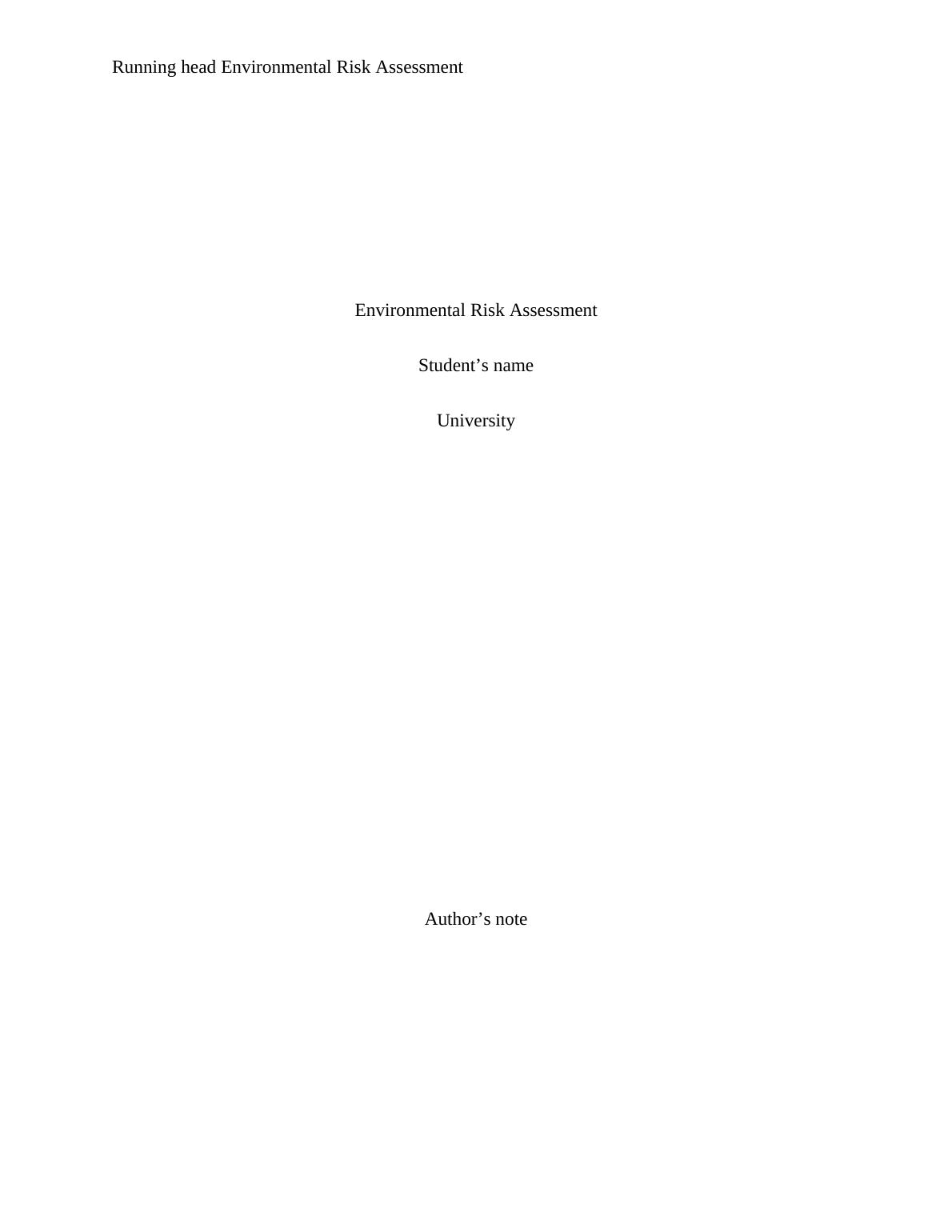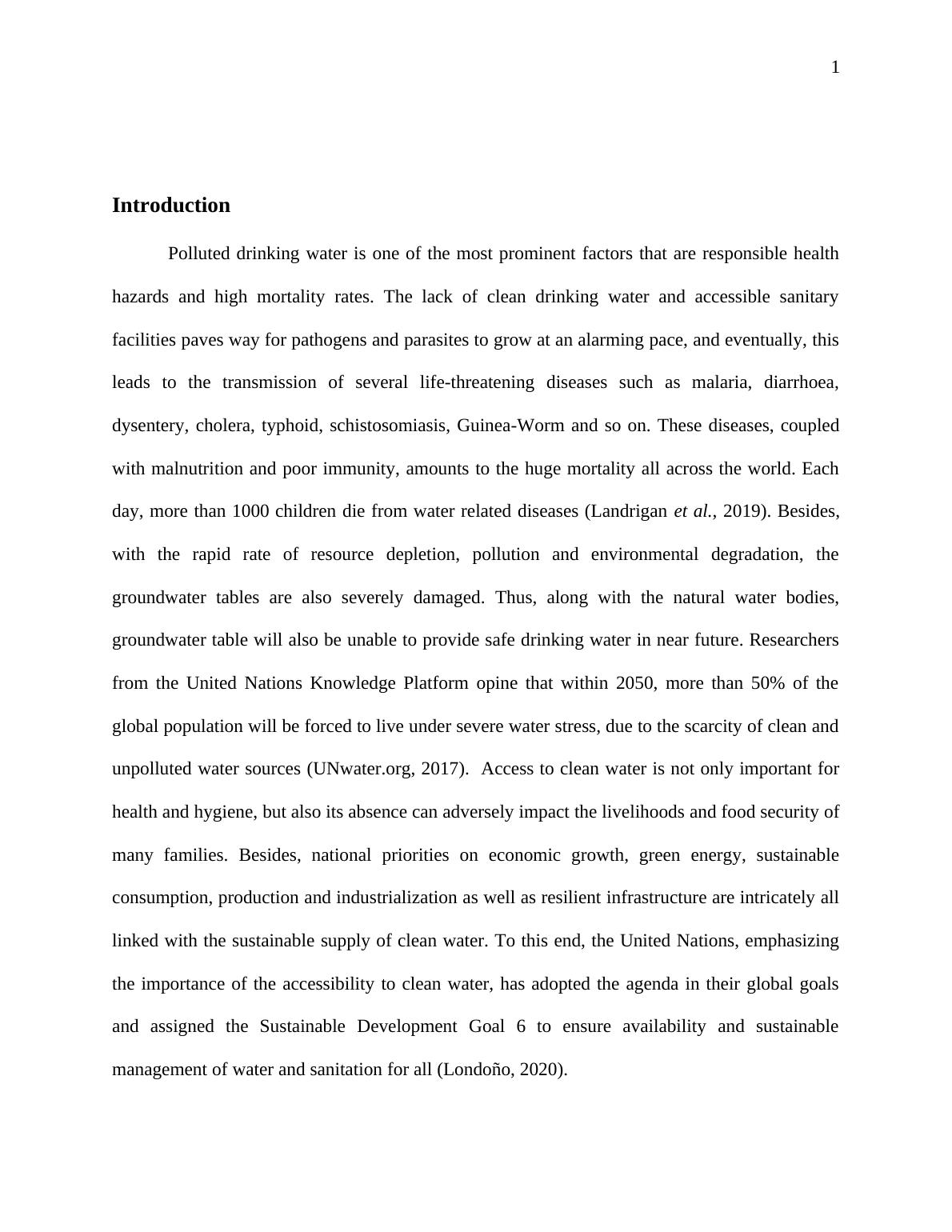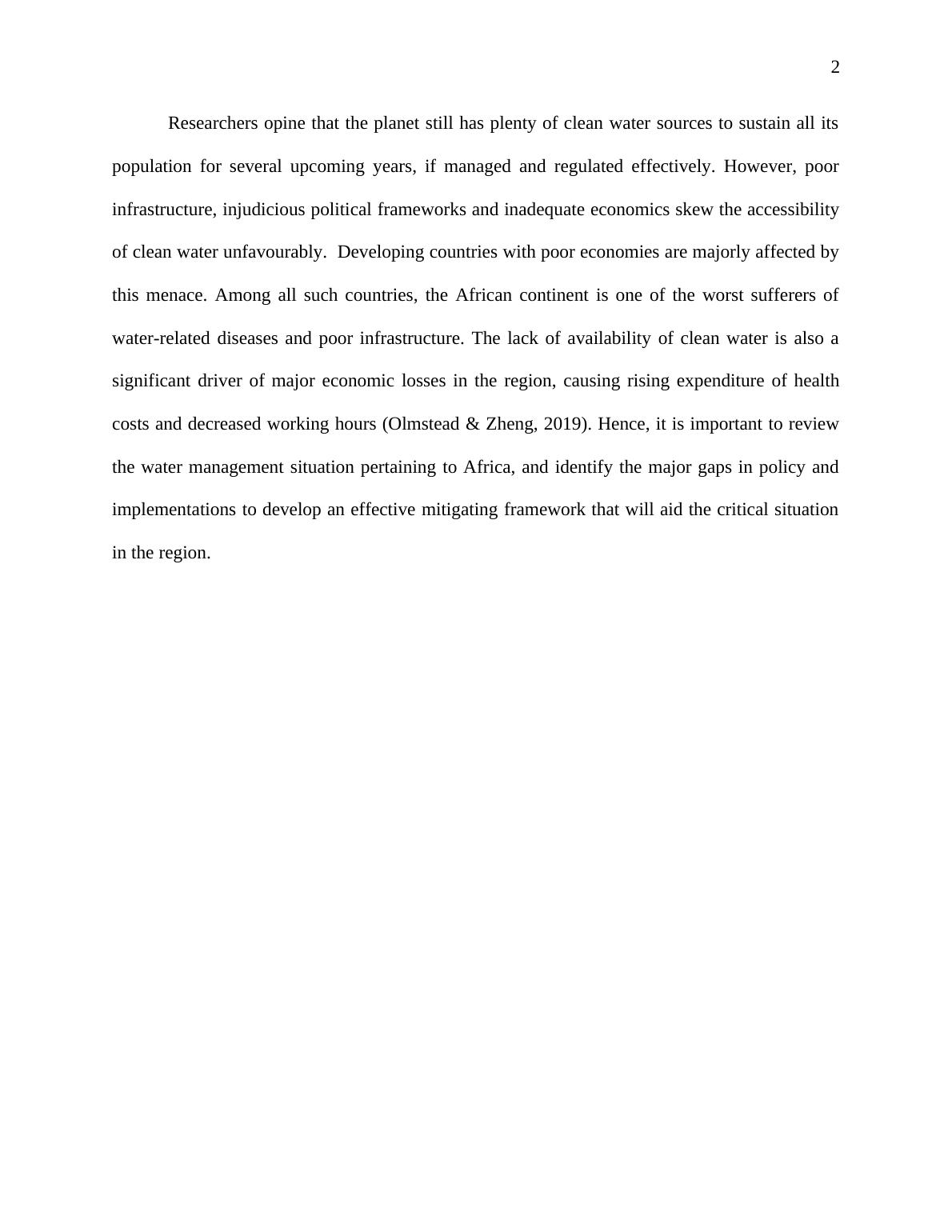Environmental Risk Assessment : Polluted drinking water
Added on 2022-08-27
13 Pages2430 Words14 Views
End of preview
Want to access all the pages? Upload your documents or become a member.
Sanitation and Hygiene Policy
|14
|4078
|68
Food Security in Sudan: Analysis of Food System and Vulnerability to Shocks
|13
|3860
|340
Strategies for Effective Pollution Management and Waste Disposal
|8
|2266
|478
Sanitation, drinking-water and hygiene: Health Issue in Ghana
|17
|6048
|147
PUBLIC HEALTH AS A CROSSCUTTING ISSUE
|8
|2312
|57
Environmental Science: Safe Water Drinking, Human Impact on Oceans, National Parks, Pesticides, Invasive Species
|8
|1823
|472




